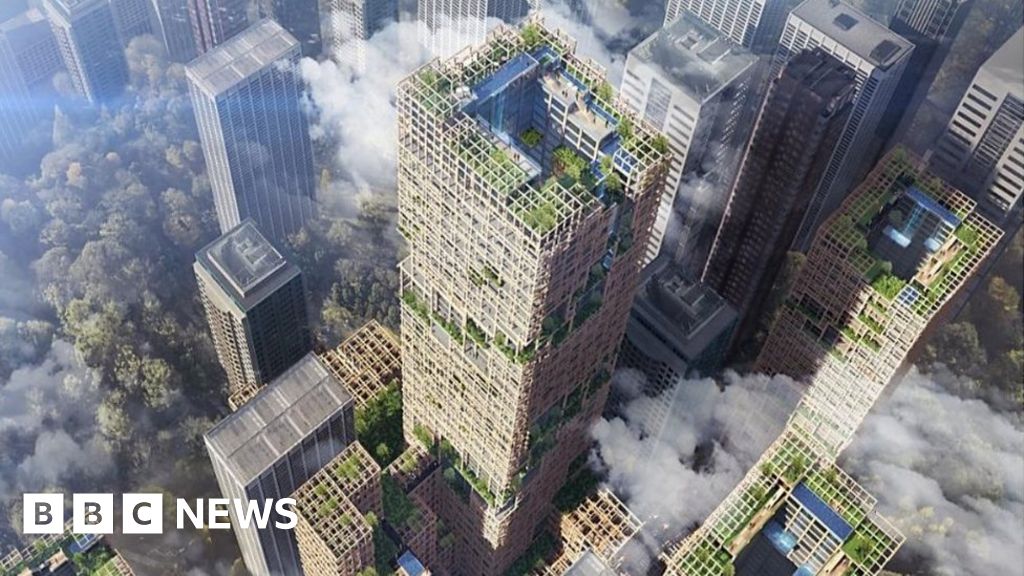Plans Drawn Up For World's Tallest Wooden Skyscraper

 Image copyright
Sumitomo Forestry
Image copyright
Sumitomo Forestry
A Japanese company is planning to build the world's tallest wooden skyscraper, to mark its 350th anniversary in 2041.
Sumitomo Forestry said 10% of the 70-storey W350 tower would be steel, combined with about 180,000 cubic metres of indigenous wood.
There will be about 8,000 homes, with trees and foliage on balconies at every level, it said.
A "braced tube structure", diagonal steel vibration-control braces at the centre of a 350m (1,150ft) wood and steel column, would protect against Tokyo's regular earthquakes, it said.
How much will the skyscraper cost?
The projected cost of the building is about 600bn yen (£4.02bn; $5.6bn), about twice the cost of a conventional skyscraper of the same size.
However, Sumitomo says it expects costs to fall before the building's 2041 scheduled completion date due to technological advances.
Is the concept of a wooden skyscraper new?
No. Japan actually passed a law in 2010 requiring construction companies to use wood for public buildings that are below three storeys high.
It's not a new concept worldwide either.
Wooden skyscrapers can be found across the globe, from an 18-storey office building in Minneapolis made from timber to a 53m-high block of student flats in Vancouver that currently holds the title of world's tallest wooden skyscraper.
How environmentally friendly is it?
Concrete and steel buildings leave behind a carbon footprint, and are thought to be responsible for about 8% and 5% of global emissions respectively.
Wood, on the other hand, stores carbon instead of emitting it back into the atmosphere.
Japan also has large forests, covering approximately two thirds of land area.
What challenges are there in a project like this?
Fire-resistance is obviously one key factor.
However, cross-laminated timber (CLT), a building material that is becoming more common, is designed to be fire resistant and unlike steel, remains more structurally stable when subjected to high temperatures.
It's a lot more expensive to build a wooden skyscraper, so chances are you're not going to see them pop up across your neighbourhood anytime soon.
From Chip War To Cloud War: The Next Frontier In Global Tech Competition
The global chip war, characterized by intense competition among nations and corporations for supremacy in semiconductor ... Read more
The High Stakes Of Tech Regulation: Security Risks And Market Dynamics
The influence of tech giants in the global economy continues to grow, raising crucial questions about how to balance sec... Read more
The Tyranny Of Instagram Interiors: Why It's Time To Break Free From Algorithm-Driven Aesthetics
Instagram has become a dominant force in shaping interior design trends, offering a seemingly endless stream of inspirat... Read more
The Data Crunch In AI: Strategies For Sustainability
Exploring solutions to the imminent exhaustion of internet data for AI training.As the artificial intelligence (AI) indu... Read more
Google Abandons Four-Year Effort To Remove Cookies From Chrome Browser
After four years of dedicated effort, Google has decided to abandon its plan to remove third-party cookies from its Chro... Read more
LinkedIn Embraces AI And Gamification To Drive User Engagement And Revenue
In an effort to tackle slowing revenue growth and enhance user engagement, LinkedIn is turning to artificial intelligenc... Read more

